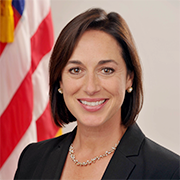What Is the Right Pathway to Healthcare Interoperability?

- According to the head of the Office of the National Coordinator for Health Information Technology, the answer to that question is not one but "three critical pathways" that are necessary to advance interoperability in an efficient and safe manner.

More than a week after delivering her keynote at HIMSS15, National Coordinator Karen DeSalvo, MD, MPH, MSc, took to the blogosphere to reiterate the federal agency's plans for initiating its own as well as supporting others' efforts in developing an interoperable health IT infrastructure across the nation.
Writing on Health Affairs Blog, DeSalvo reiterated that health IT interoperability is still in its infancy. "Our nation’s success in adoption, and even the success we see in the increasingly widespread availability of exchange of health information, is just the beginning," she writes.
According to DeSalvo, interoperability in healthcare does not have a definitive end. Instead, it is a continuous, cyclical process.
"Interoperability is a priority but is really only a means to an end. What we are moving towards is a world in which health IT and interoperability enables better care and better health," she adds.
The National Coordinator's comments echo those of the Secretary of the Department of Health & Human Services in response to a question from Senator Lamar Alexander (R-TN) about physician dissatisfaction with EHR technology during a Senate Appropriations Subcommittee hearing last week.
"Where healthcare is going and where everything is going in terms of our ability to serve the consumer, the patient, in the way we need to, this is a core part," HHS Secretary Sylvia Burwell said of the important role of EHR and health IT infrastructure.
Returning to DeSalvo's comments, the National Coordinator identified three pathways critical to the pursuit of a learning health system:
1. First, we need to standardize standards, including APIs, and implementation standards.
2. Second, we need to have clarity about the trust environment — what are the shared expectations and actions around data security and privacy?
3. And third, we need to incentivize—in a durable and sustainable way—interoperability and the appropriate uses of electronic health information — all with the goal to advance health care and health.
Of the first pathway, DeSalvo emphasizes the need for collaboration among key stakeholders such as standards development organizations (SDOs), health IT developers, and healthcare organizations and providers to ensure that ONC and its federal counterparts are "moving in a direction that was in synch with the marketplace and consumer expectation" as well as "give certainty about our federal policies and approaches."
DeSalvo views the progress of the Argonaut Project — a coalition of health systems (e.g., Beth Israel Deaconess Medical Center, Boston Children's Hospital), health IT companies (e.g., Cerner, Epic, athenahealth), and other members of the private sector — and its work with Fast Healthcare Interoperability Resources (FHIR) as a positive sign of things to come.
"I am optimistic because I am seeing collaboration like never before from the private sector — look at the Argonauts," she continues, "who are accelerating the maturation of FHIR, to see that we have a safe, but highly usable new technology that stands to transform the health IT ecosystem."
The other two pathways are likely to prove more challenging as fostering trust and incentivizing interoperability require much more than technology but a cultural shift in how healthcare is delivered.
"As we act on this vision, we have an ongoing cadence of work ahead. We will need an unprecedented amount of cooperation, collaboration, and transparency to see that there is the best public private partnership possible," DeSalvo concludes.
